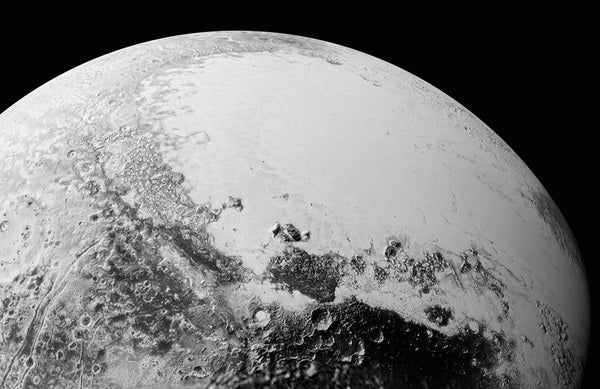Last year, we celebrated the Year of Pluto, in celebration of NASA’s fly-by of the dwarf planet on July 14, 2015. The first close-up image was returned on the 14th, with the flyby taking 22 hours.
During that time, the craft was silent, designed to have as few moving parts as possible in order to minimize the risk of something breaking in its nine year journey to the world first discovered by Clyde Tombaugh in 1930.
As the once-smallest planet, Pluto had been mostly a speck of light. To the Hubble Space Telescope, it was an indistinct blur. But the New Horizons encounter gave us a view of a dynamic, active world, one that may have a subsurface ocean along with liquid nitrogen “seas” emanating from Sputnik Planum, the heart-shaped region of the world. Its five moons seem to come from the same source, that of some violent upheaval in its history.
New Horizons recently got a mission extension, enabling it to sail on to 2014 MU69, an ancient, small Kuiper Belt Object, studying it in detail while making observations of other KBOs on the way. For NASA, this is just the beginning of the exploration of Pluto and the Kuiper Belt. Hopefully, a Pluto orbiter can become a reality sooner than later. There’s still much to learn. And indeed, New Horizons isn’t quite done sending back that data.
But while we wait for the rest of the data set — and subsequent studies of the world — let’s remember this video, when mission control first learned that New Horizons had made it through the Pluto system successfully.










